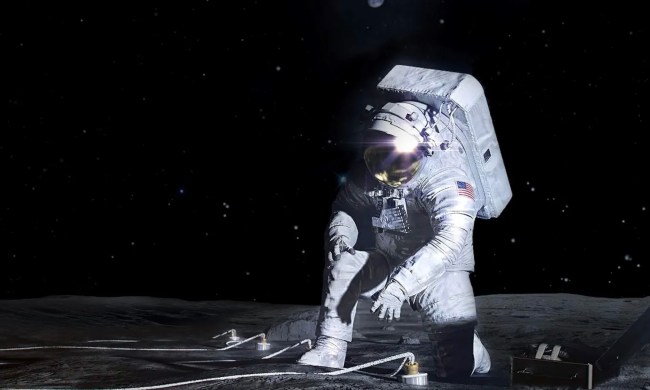If the tire on your car fails, it’s either a case of changing it yourself or getting someone to do it for you. For rovers on Mars, neither option is available.
The good news is that the wheels on NASA’s robot vehicles are robust enough to keep on rolling even after suffering serious damage.
A photo recently beamed to Earth by NASA’s trusty Curiosity rover shows significant damage to its middle right wheel, but the vehicle is still able to traverse the red planet’s rocky terrain without too much difficulty.
“These big wheels keep on turning,” a message accompanying the photo said on Curiosity’s X (formerly Twitter) account on Thursday. “Recent photos of my wheels got some of you worried, but I’m here to reassure you, we’re just fine! The images help my team keep tabs on wear and tear. If it came down to it, I could shed part of them off and keep on rolling.”
These big wheels keep on turning. 🛞
Recent photos of my wheels got some of you worried, but I'm here to reassure you, we're just fine! The images help my team keep tabs on wear and tear. If it came down to it, I could shed part of them off and keep on rolling. pic.twitter.com/h1oKLB3oW7
— Curiosity Rover (@MarsCuriosity) October 4, 2024
Each wheel is 50 centimeters in diameter and 40 centimeters wide, and was machined from a single block of aluminum. The wheels also have grousers (treads) that protrude 7.5 millimeters from the wheel skin. Since touching down inside Mars’ Gale Crater 12 years ago, the rover has traveled around 20 miles (32 kilometers) across the challenging martian surface, which is a whole lot of rolling.
It’s not actually a big surprise that Curiosity’s wheel is looking a little tattered and torn, as holes started appearing on the rover’s wheels as early as 2013, just a year after it touched down on the distant planet.
One of Curiosity’s remote operators said in 2014 that when the team examined some images of Curiosity’s wheel early on in the mission, “We saw a hole that was much larger than we had expected. This did not match anything we had seen in our tests. We didn’t know what was causing it. We didn’t know if it was going to continue.”
After considering how to reduce the damage, the Curiosity team began selecting routes with less treacherous terrain, and in 2017, they uploaded a new algorithm to the rover that altered each wheel’s speed and helped to lessen the pressure from rocks that it came into contact with.
Wheel damage has certainly slowed the progress of Curiosity and limited the paths that it can take, but the NASA team operating the mission are still able to achieve many impressive things with the plucky rover.



